#protein evolution
Text
Thinking about how the other day I told my coworker to never put essential oils in her food and she was horrified that people do that, but not because it's poison (she didn't know that) but because the idea of oil in food disgusts her. Like WHAT
#im not talking motor oil i mean like olive oil and stuff is so good and literally what carries the flavor#we have millenia of evolution to make oil sugar and protein delicious#sorry i mean carbohydrates#like these ARE the three(3) food groups and we are supposed to eat them#we NEED oil#ask to tag'
5 notes
·
View notes
Text
Epistatic drift leads to unpredictability in protein evolution
Epistatic drift leads to unpredictability in protein evolution
A critical goal in genetics and evolution is predicting the effects of mutations that may happen in the future and inferring the effects of those that happened in the past. To make these predictions, scientists generally assume that a mutation’s effects tested in the present apply to past and future versions of the same gene.
This assumption turns out to be wrong for most mutations, a new study…
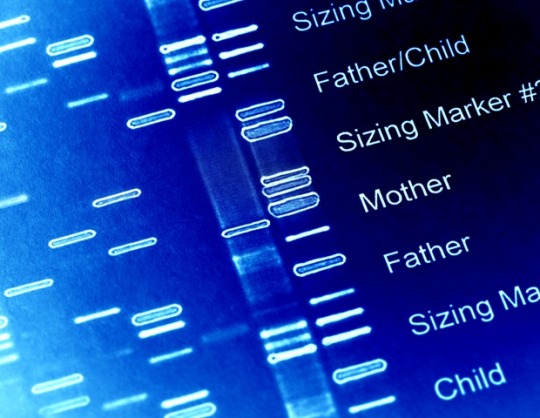
View On WordPress
#Amino Acid#biochemistry#DNA#embarrassed#Evolution#Genetics#Genoa#Hormone#Mutation#protein#Receiver#Research#steroid#Virus#X-ray
5 notes
·
View notes
Text
Criminals, rapists and cannibals: Donald Trump and the immigrants
Way back in 2015, when first campaigning for the presidency, Donald Trump announced he would build a wall on the border with Mexico to keep out:
“…people that have lots of problems. They’re bringing drugs. They’re bringing crime. They’re rapists. And some, I assume, are good people.”
That seems quite tame now, doesn’t it? Warning about rapists have lost their power, especially given Trump’s own…

View On WordPress
#Anthony Hopkins#Brian Cox#cannibal#Cannibal Holocaust#cannibalism#Darwin#Donald Trump#evolution#Hannibal#hannibal lecter#Mads Mikkelsen#Mar-a-Lago#meat#mental institutions#Mexico#Nietzsche’s Übermensch#protein#rapists#Right Side Broadcasting Network#supremacism#The Silence of the Lambs
0 notes
Text
0 notes
Text
L'étrange évolution de survie du poisson des glaces
Nouvel article publié sur https://www.2tout2rien.fr/evolution-de-survie-du-poisson-des-glaces/
L'étrange évolution de survie du poisson des glaces
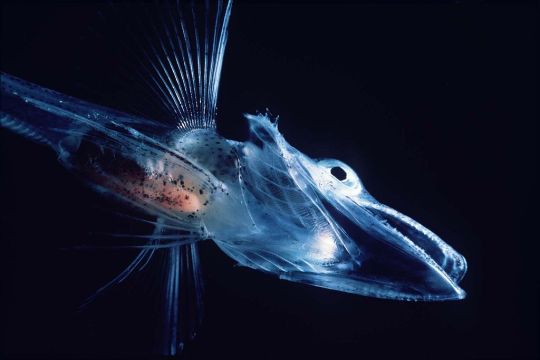
#antarctique#antigel#coeur#evolution#froid#gel#glace#hemoglobine#poisson#proteine#survie#animaux#imxok
0 notes
Text
#covid-19 vaccine#covid-19#spike protein#sars-cov-2#evolution#immune escape#viral escape#biofilm#microbiome
0 notes
Text
Der bivalente mRNA-Impfstoff-Booster Omicron BA.4/BA.5 löst ähnliche neutralisierende Antikörperreaktionen aus wie der monovalente Impfstoff
In einer Studie, die kürzlich im veröffentlicht wurde bioRxiv* Preprint-Server: Forscher analysierten die Antikörperreaktion, die durch die neuen Impfstoffe gegen das schwere akute respiratorische Syndrom Coronavirus 2 (SARS-CoV-2) mit bivalenter Boten-Ribonukleinsäure (mRNA) bei Personen ausgelöst wurde, die vollständig mit monovalenten Impfstoffen geimpft wurden, und bei Personen, bei denen ein…

View On WordPress
#Antikörper#Atemwege#Coronavirus#Coronavirus-Krankheit COVID-19#EIWEISS#essen#Evolution#Immunität#Impfstoff#Omikron#Pseudovirus#Ribonukleinsäure#SARS#SARS-CoV-2#Schwere akute Atemwegserkrankungen#Schweres akutes respiratorisches Syndrom#Spike-Protein#Syndrom#Virus
0 notes
Text
youtube
Kinesin Protein
In this video, Calvin Smith takes a deep dive into the amazing kinesin protein. Unfortunately, evolutionists will claim that this protein is the result of chance, but if you take the time to listen to the experts who have researched this topic, this video will change your mind.
1 note
·
View note
Text
in the late Usamerican death cult, many offered worship despite other overt religious commitments via a ritual experts call "Grilling". An informal canon is beginning to emerge describing the feast days and seasons of the calendar during which "Grilling" was acceptable. Those prepared to participate in the late Usamerican death cult assembled in small gatherings outdoors in private residences or state-owned land; they would then light contained fires to cook forcemeat and small cuts over an open grill. While some suggest this is a ritualistic reenactment of cooking methods that predominated before the electric range, it remained prominent even in households with gas or other ranges, and evidence has emerged that many households maintained both a gas range and a gas grill. The openness of the grill was of sacredotal importance; drippings of fat and myoglobin would both feed and foul the fire, ritually recreating the subordination of the natural world to the thanatos complex. It was rare, sometimes even actively discouraged, for these grills to be cleaned in spite of obvious food safety concerns.
Despite late Usamerican culture's famous fixation on meaningless choices at the point of consumption of material goods, the master of ceremonies was expected and encouraged to impose "correct" gustatory choices on the ritual participants, and in all cases it was taken as granted that the host would choose and openly express strong opinions on the fuel source, acceptable 'brands' and varieties of forcemeat and small cuts, etc. While this ritual complex was similar to a related tradition in late Usamerican culture, the "Dinner Party", key differences include the anticipation of male leadership (possibly suggesting a late evolution of the patriarchial "Grilling" complex against the backdrop of a more matriarchial/matrilocal society), a relatively standardized bill of fare, and in direct contradistinction to the "Dinner Party" complex, the clear expectation of a radically imbalanced nutritional profile favoring fat and protein. It is debated whether alcoholic libations were ever central to the late Usamericans' understanding of "Grilling"; yet it is certain that even for female participants, where drinking did take place, beer and neat spirits were favored, and wines and mixed beverages were regarded as inappropriate.
"Grilling" is a subject on which voluminous scholarship exists, and this survey is necessarily too brief to contain research done on several aspects and sub-complexes in the late Usamerican death cult, including the predominance of plastic and plastic-coated utensils and servingware regarded as single-use, the loose canon of acceptable and unacceptable forcemeats, the emergence, exoticization, and decline of the "Shish Kebab", and the layers of ironic subtext in "Grilling"-dominated late Usamerican works like King of the Hill or Twitter.
Strange as it might seem to us, "Grilling" tied late Usamerican men together in casual yet firm homosocial bonds (while both reflecting and reaffirming existing dominance-submission relationships) almost as efficiently as men throughout history have typically achieved by simply fucking nasty
1K notes
·
View notes
Note
this might be a stupid question, but if theres a protein that multiple organisms need, wouldn't the a t g c genetic code for it be the same for different species? or at least closely related species? so theoretically some prompts/sequences should have multiple fitting organisms or closest fitting organisms
(i know it isn't this simple, but im wondering what the exact reason it doesn't work like that is, or what im missing)
not a stupid question, i'll try to answer it to the best of my understanding, but if anyone has anything to add, please do.
put shortly: you're right! if multiple organisms need a certain protein, the code in their DNA is generally the same in that region.
from a genetics perspective, all organisms are actually extremely similar. i'm sure you've heard that we humans share more than half our genetic information with bananas and such.
this is just a factor of how evolution works. every so often, a mutation occurs in an organism's genome, which has a chance to increase the fitness of that organism, which allows it to have more offspring, which changes the mix of alleles in the population. and this is how we get different species of things.
but, because we all share a common ancestor from a long, long, long, long time ago, we do maintain some similarities, especially in regions that code for things essential to life.
those regions where things are *different* is where we're able to tell one species from another, differentiating moths from trees and such. but, overall, all living organisms have a whole lot in common.
454 notes
·
View notes
Text

Jolts from electric eels cause fish to absorb free-floating DNA
Zebrafish larvae took up genes for fluorescent proteins and began to glow after swimming with eels.
Think of it as a sort of superhero origin story for zebrafish:
Getting zapped by electric eels can allow them to acquire new DNA—and new abilities—researchers reported yesterday in PeerJ. Scientists working with genetic engineering sometimes use electricity to open temporary holes in cell membranes to allow foreign DNA to enter.
To find out whether a version of this phenomenon can happen in nature, the team put electric eels (Electrophorus electricus, pictured) and larvae from zebrafish (Danio rerio) into a tank together, along with free-floating genes that code for a green fluorescent protein.
After a day swimming amid the eels’ electric shocks, some larvae started to glow green, New Scientist reports, indicating their cells had taken in and begun to express the foreign genes.
The newly acquired DNA degraded quickly—the larvae only glowed for about a week—but it caused scientists to wonder: Could a wild animal acquire genes in this way and pass them to its offspring?
Researchers aren’t yet sure, but if so, they say it could introduce new mutations that influence the species’ evolution.
via: https://www.science.org/content/article/jolts-electric-eels-cause-fish-absorb-free-floating-dna
670 notes
·
View notes
Note
yo I'm actually kinda curious now I'm not a geneticist and I guess you aren't either to my knowledge but what the hell does the y chromosome do? specifically in trans people on hrt and stuff I mean. to my understanding you said that trans women have everything they really need from one x chromosome, so. what's the other one up to. and also for trans men who lack a y chromosome, are they like. missing anything? hormones do 99% of the heavy lifting, right?
much love and whatnot btw. sorry about the freak in your inbox
Bit tired right now, so I hope this doesn't come out too rambly.
The one function that the Y chromosome has on sex determination is the Sry gene. This gene is responsible for testes formation, and ultimately, testosterone production. That's pretty much it. All of the other genes required to make something male or female are present, but inactive, in everyone. Hormones tell cells which ones to switch on and off, and at what times.
There's no explicit reason why Sry has to be linked to the Y chromosome. Most non-mammalian animals have different methods of sex determination, either from different sets of chromosomes, environmental triggers, or similar sex determining genes associating in appropriate ratios.
Why the Y, then?
All chromosomes, sex and somatic, are paired. Each member of the pair has the same genes on it. This is why you have two copies of most genes, and different "forms", or alleles, of a gene are possible. It's why mendelian genetics works. One of the cleanest examples is blood type. Blood types A, B, and O are all different forms of the same gene. You have two of these genes, and can therefore end up in combinations like AB, AO, etc (O in this case is no protein, A and B are slightly different forms of the same protein).
The Y chromosome is different. It's a shortened version of the X chromosome. So every gene on the Y chromosome has a pair on the X, but some genes on the X don't have a partner on the Y. And these genes have nothing to do with sex determination- the gene encoding for the red-sensitive protein in your eyes is an example of a gene in the part of the X chromosome that is "chopped off" to make the Y, and is therefore not carried by it. Every organism NEEDS at least one copy of these genes- from that point, you can upregulated that one copy and end up fairly normal.
Large chromosome deletions are fairly common, but oftentimes lethal to a developing embryo (not so fun fact, this is why the miscarriage rate is something like 70%, oftentimes so early and invisible that even the mother doesn't notice). While we can't know for certain without a time machine, the rationale is that one of these large chromosomal deletions happened to the X chromosome at some point in mammalian evolution. From that point, the only way that offspring can be passed down with that new Y chromosome in the gene pool is if you have a system that somehow forces every offspring to end up with at least one X chromosome.
Sry being linked to the Y chromosome accomplishes just that. It's an evolutionary band aid, a patch, a bodge, on a deleterious mutation. It forces the XX to XY pairing, ensuring that YY offspring don't happen.
In fact, we can see something similar happening in real time with a population of white throated sparrows: https://www.ncbi.nlm.nih.gov/pmc/articles/PMC7725849/#:~:text=Thus%2C%20not%20only%20do%20white,et%20al.%2C%202016).
A large chromosomal deletion is forcing new reproductive rules for pairing, to reduce the number of non viable offspring.
Hope this was somewhat digestible! It's a cool topic, but I'm very eepy atm
97 notes
·
View notes
Text
The modern world is nice, but sometimes you just get the urge to go primitive. Because I'm a complete wimp who would die within a day of giving up the internet, I'm going to deal with that urge by talking about primitive animals. It's Wet Beast Wednesday and I'm talking about lancelets.

(image: a lancelet. Not much to look at, are they?)
Lancelets, or amphioxi, are highly basal (close to the ancestral form) chordates that are vaguely similar to fish, but are vastly more primitive. They have all the characteristics of chordates, the key one being a notochord, a flexible rodlike structure that goes down the body. The majority of chordates that are still alive are vertebrates, who have incorporated the notochord into the spinal column. The other groups of surviving chordates are the tunicates (who I'll get to eventually) and the lancelets. Because lancelets are so primitive, they are used at model organisms representing an early stage of vertebrate evolution. It was originally thought that lancelets are remnants of an early lineage that eventually evolved into vertebrates. Genetic studies later showed that tunicates are actually more closely related to modern vertebrates than lancelets. They are still used as a model organism as they are a fantastic representation of early chordates. The similarity of lancelets to the 530 million year old Pikaia gracilens, one of the earliest known chordates, is one of the reasons they are such a useful model organism.

(image: a diagram of lancelet anatomy by Wikipedia user Systematicist)
Lancelets can be found all over the world, living in temperate to tropical shallow seas. The only known exception is Asymmetron inferum, which has been found around whale falls at 225 m (738 ft) deep. They are small animals, reaching around 8 cm at their largest. An amphioxus looks pretty worm-like, with a simple mouth at one end and a pointed tail at the other. The name amphioxus means "both (ends) pointed" which is a pretty appropriate description. The mouth is lined with tentacle-like threads called oral cilli, which are used for feeding. Lancelets are filter-feeders that use the cirri to filter plankton, microbes, and organic detritus. Water and food pass into the pharynx (back of the mouth), which is line with gill slits. This is where it gets weird. The gill slits aren't used for respiration, but for feeding. Mucus gets pushed through the gill slits by cilia, trapping the food and moving it deeper into the digestive tract. Not only to lancelets not use their gill slits to respirate, they actually don't have a respiratory system at all. Instead, they just absorb dissolved oxygen through their thin and simple layer of skin. Their circulatory system doesn't move oxygen around either as there is no heart or hemoglobin present. For what it's worth, they don't have a proper live either. When you look at a lancelet's anatomy, you can see similarities to fish anatomy, just much more primitive and with some parts missing.
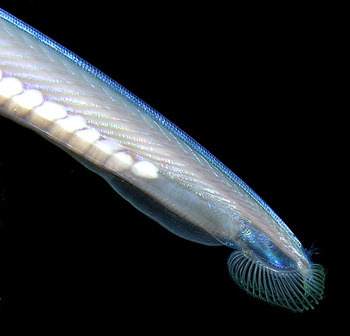
(image: the head of a lancelet, with mouth and cilli visible)
Lancelets have 4 different systems used for vision. Two, the Joseph cells and Hesse organs, are simple photoreceptors that are on the notochord and detect light along the back of the animal. Imagine having a bunch of very simple yes on your spinal cord that can see through your skin. There is also a simple photoreceptor called the lamellar body (which confusingly is also the name of a type of lipid) and a single simple eye on the head. Speaking of light, lancelets are florescent, producing green light when exposed to blue to ultraviolet light. In all species, the proteins responsible for this are found around the cilii and eye, but some species also have them in the gonads and tail. The purpose for this florescence isn't exactly known, but a common hypothesis is that it helps attract plankton toward their mouths.
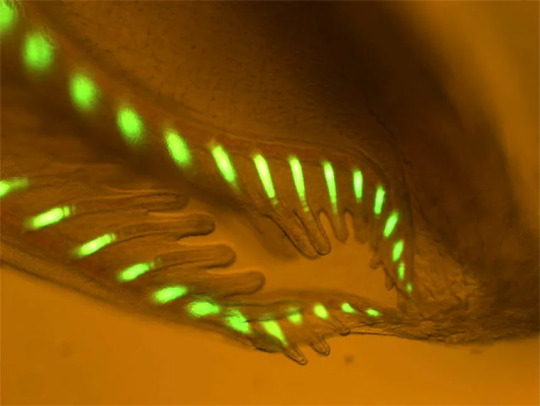
(image: an extreme close-up of a lancelet's cilli fluorescing)
Lancelets have seasonal reproduction cycles that occur in summer. Females release their eggs first, followed my males releasing sperm to fertilize them. Depending on species, spawning can either occur at specific times, or gradually throughout breeding season. Development occurs in several stages. In the frist stage, they live in the substrate, but they will quickly move into the water column to become swimmers. These swimming larvae practice diel vertical migration, traveling to the surface at night and returning to the seafloor in the day. While larvae can swim, they are still subject to the current and can be carried long distances. Adults retain their ability to swim, which is done by wriggling like an eel and in some cases, spinning around in a spiral fashion while moving forward. Unlike the larvae, adults spend most of their time buried in the substrate with only their heads exposed. They typically only emerge when mating or if disturbed.
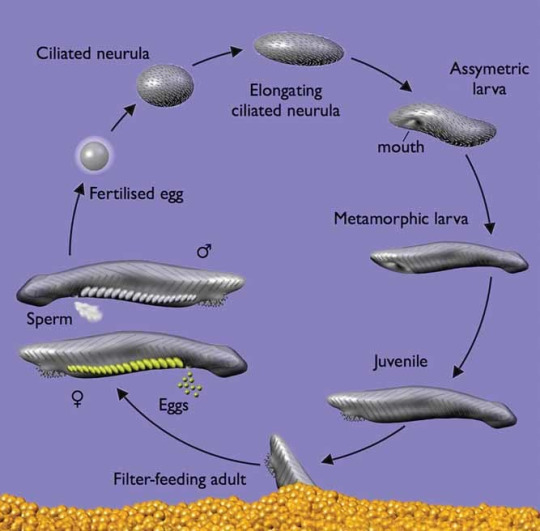
(image: a diagram of the lancelet life cycle. source)
Because of their use as model organisms, humans have developed methods to keep and breed lancelets in captivity. The majority of research has been done on Branchiostoma lanceolatum, but several other species have been studied. Multiple species are endangered due to pollution and global warming. Several species are edible and can either be eaten whole or used as a food additive. In spring, when their gonads begin to develop for breeding season, they develop a bad flavor.
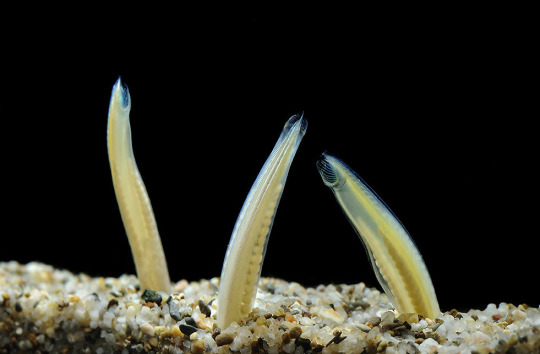
Mom: "we have garden eels at home". Garden eels at home:
(image: three lancelets sticking their heads out of the sediment)
#wet beast wednesday#weird-ass tube beast#lancelet#amphioxus#chordate#chordata#marine biology#biology#ecology#zoology#animal facts#evolutionary biology
232 notes
·
View notes
Text

[ A 50-million-year-old fossilised feather from the Green River Formation in Wyoming. Photo by Tiffany Slater. ]
"Feathers from modern-day birds have more in common with dinosaur feathers than experts previously thought and have a similar protein composition, a new X-ray analysis reveals. The discovery offers new insight into the evolution of feathers over hundreds of millions of years.
Paleontologists examined feathers from three ancient animals, including a 125 million-year-old nonavian dinosaur called Sinornithosaurus found in China; a 125 million-year-old early bird, also from China, known as Confuciusornis; and an unspecified species that lived in what is now the Green River Formation in Wyoming 50 million years ago, according to a study published Sept. 21 in the journal Nature Ecology and Evolution.
After conducting X-ray and infrared light analyses on the ancient feathers, the researchers detected traces of corneous beta-proteins (CBPs), formerly known as beta-keratins, which are proteins necessary for strengthening feathers for flight. The international team of researchers then examined feathers from today's birds, such as zebra finches (Taeniopygia) and noticed that they contained a similar chemical structure."
Read more: "125 million-year-old dinosaur feathers were remarkably similar to modern bird feathers, analysis reveals" by Jennifer Nalewicki.
#palaeoblr#Palaeontology#Paleontology#Fossil#Feathers#Sinornithosaurus#Confuciusornis#Theropod#Dinosaur#Bird#Cretaceous#Mesozoic#Prehistoric#Extinct#Article#Photo#Information
185 notes
·
View notes